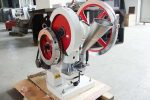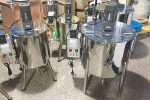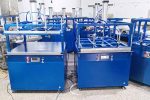Ultrasonic sealing machine is a sealing equipment widely used in the packaging industry. Its working principle is based on ultrasonic technology, which achieves sealing of objects by converting high-frequency vibration into heat energy.
Ultrasonic sealing machine mainly consists of ultrasonic generator, converter, vibration system and sealing device.
First, the ultrasonic generator converts electrical energy into high-frequency electrical energy and transmits it to the converter. The converter converts high-frequency electrical energy into mechanical vibration and transmits the vibration to the vibration system. The vibration system transmits vibration to the sealing device, causing it to vibrate at high frequencies.
When the sealing device comes into contact with an object, high-frequency vibration will generate frictional heat. This frictional heat can quickly heat the surface of an object above the melting point and form a layer of molten material.
Subsequently, the sealing device applies a certain amount of pressure to press the molten materials together. When the vibration stops, the molten material quickly cools and solidifies, forming a strong seal.
Ultrasonic sealers offer many advantages:
First, it can realize the sealing process without the use of external heating sources, reducing energy consumption.
Secondly, the ultrasonic sealing machine can complete the sealing in a very short time, improving production efficiency.
In addition, since no obvious thermal deformation occurs during sealing, the ultrasonic sealing machine is suitable for products that require higher sealing quality.
In summary, the ultrasonic sealing machine achieves sealing of objects by converting high-frequency vibration into heat energy. Its working principle is simple and efficient, providing a reliable sealing technology for the packaging industry.






